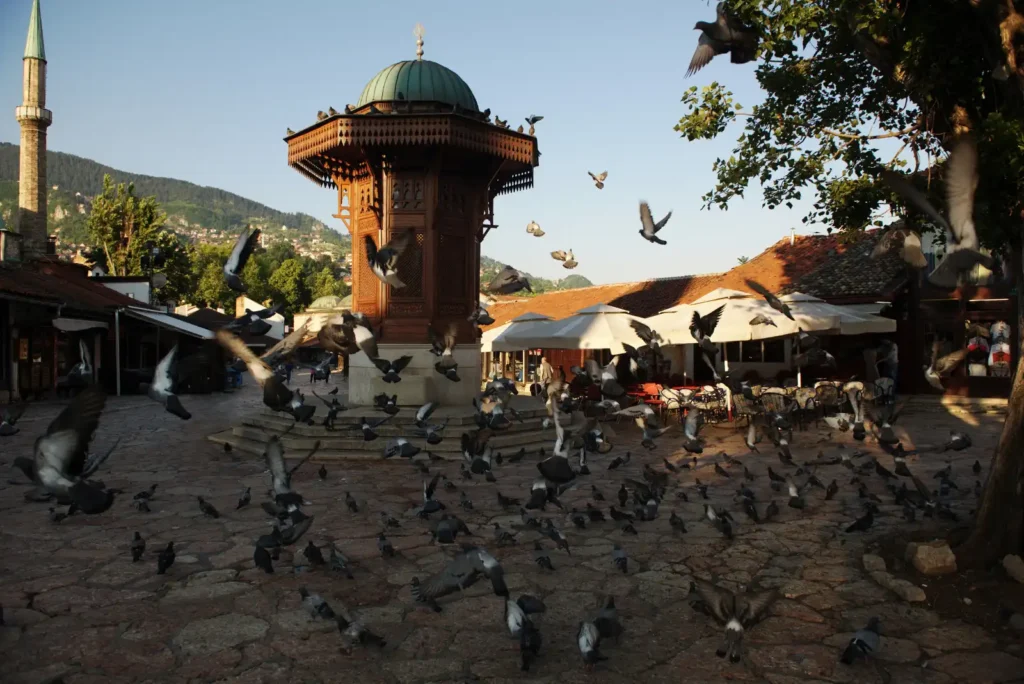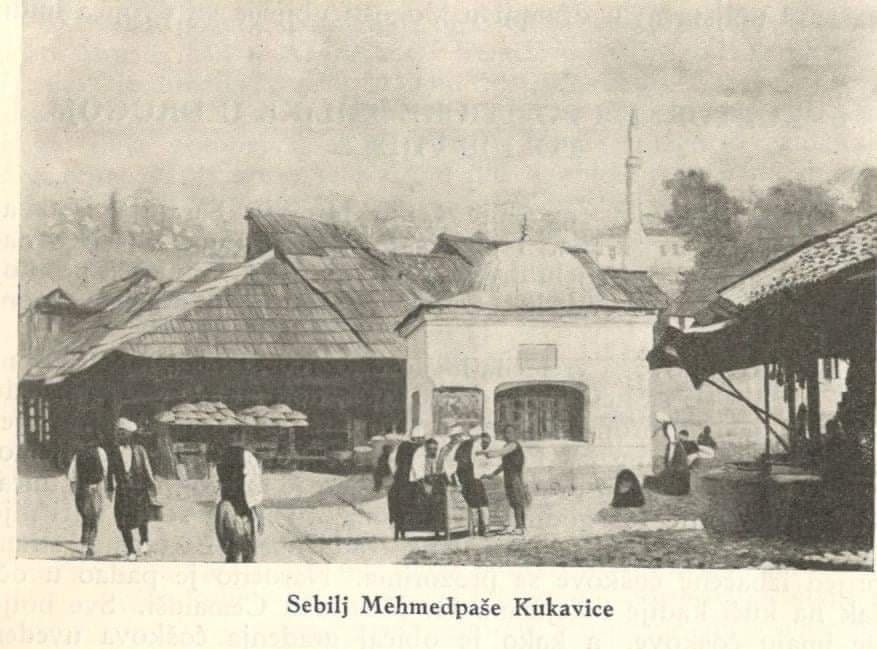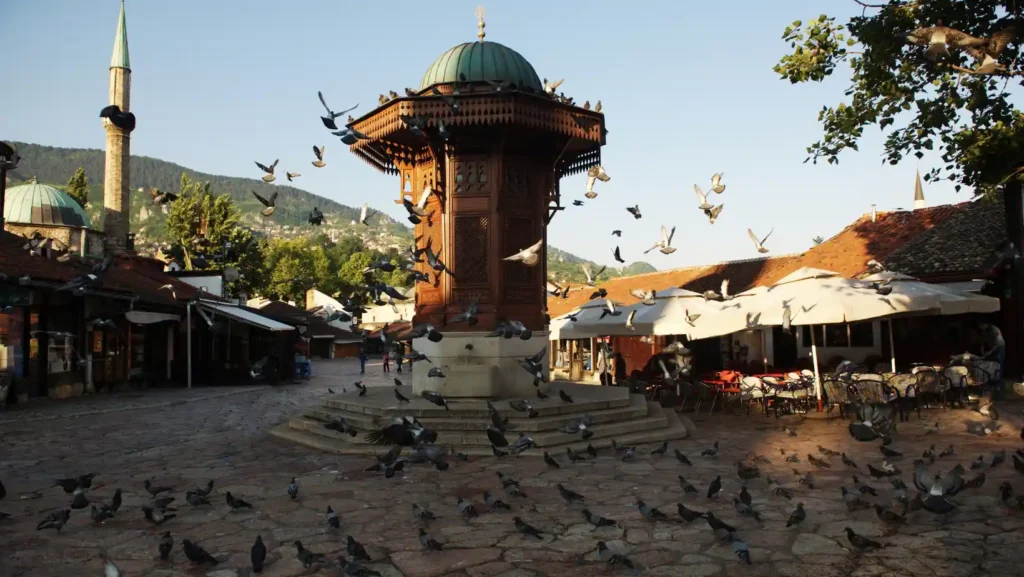The Sebilj in Sarajevo is an Ottoman-style wooden fountain in the center of Baščaršija Square. Today is one of the main symbols of Sarajevo. According to a legend, visitors who drink water from this fountain will return to Sarajevo someday.

Sebilj is located in the very heart of the old part of the city of Sarajevo called Baščaršija. It is an unavoidable attraction for tourists, but it is also a favorite place of locals.
What is Sebilj?
The word sebil is of Arabic origin and means “a building on the road in which is water”. The homeland of this type of fountain is Arabia. Their construction in Bosnia and Herzegovina began with the arrival of the Ottomans. Originally, inside the sebilj was a person who filled vessels with water and distributed them to thirsty passers-by. So, it is a small kiosk in the Islamic architectural tradition where water is freely dispensed to members of the public by an attendant behind a grilled window. The term is also used to refer to simple unmanned fountains with a tap for drinking water.
Original Sebilj in Baščaršija
The travel writer Evliya Celebi mentions that in 1660 there were 300 sebiljs in Sarajevo. All of them were destroyed in a catastrophic fire in 1697 when the Austrian prince Eugene of Savoy burned Sarajevo. Only this one in Baščaršija has been preserved to this day.
The original Sebilj in Baščaršija was built by the Bosnian Vizier Mehmed Pasha Kukavica in 1753. Mehmed Pasha Kukavica was a Bosnian vizier on two occasions and he built a large number of buildings in Bosnia and Herzegovina. Sebilj was one of them.
Kukavica ordered that water for Sebilj be brought from Gazi Husrev-bey’s waterworks. This Sebilj was demolished in 1891 for unknown reasons. According to the designs of the sebiljs built in the 16th century, Austro-Hungarian architect Aleksandar Wittek designed a new one. New Sebilj was built in 1913 and adorns Baščaršija and Sarajevo to this day. Just as Wittek constructed Sarajevo’s City Hall in the pseudo-Moorish style, which we talked about in the last post, he did the same with the construction of Sebilj.

Appearance of Sarajevo’s Sebilj
Sarajevo’s Sebilj was built of stone, wood, and copper. An octagonal pedestal covered with finely crafted stone rests on the concrete foundation, above which is a richly and beautifully executed wooden structure with wooden lattices and airy openings, which gives a peculiar impression of slenderness to the entire building. The roof structure is characterized by large eaves decorated with latticework with a cupola, covered with copper, as the final element, on top of which there is an alem. The water flows into two large monolithic stone troughs.
The first repair of the Sebilj was done in 1981, followed by a minor intervention in 1984 before the Winter Olympics were held in Sarajevo. As a result of the shelling of the city in wartime in 1992, Sebilj was damaged by shrapnel, so minor repairs followed in 1997. Sebilj was thoroughly restored in 2006 when the copper covering was replaced, the water supply and drainage were repaired, and the wood was protected.

There are many replicas of Sarajevo’s Sebilj. There is a replica of Sarajevo’s Sebilj in Belgrade, Serbia, donated by the city of Sarajevo in 1989.[Another replica in St. Louis in the United States, was donated by the Bosnian community to the city of St. Louis for the city’s 250th birthday. A third replica is in Novi Pazar, also a gift from the city of Sarajevo. In Bursa, Turkey a replica of Sarajevo’s Sebilj was built as a symbol of friendship between the city of Bursa and the city of Sarajevo. In 2018, another replica of the Sebilj has been completed in the city of Rožaje, Montenegro.
I believe that your visit to Sarajevo will not be complete without a visit to Sebilj. And if you visit Sebilj don’t forget to drink the water, so that you will always return to Sarajevo.
Visit our social media profiles as well:
